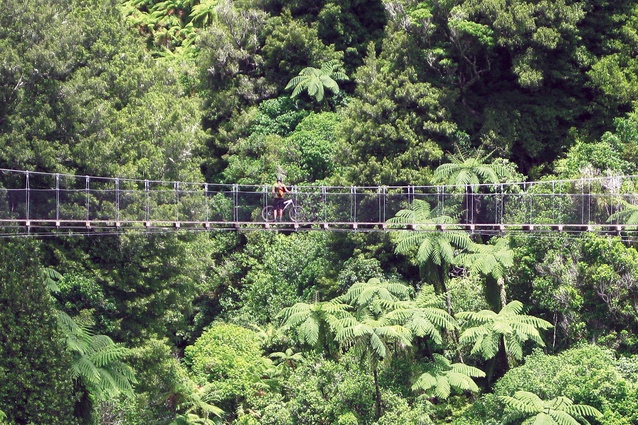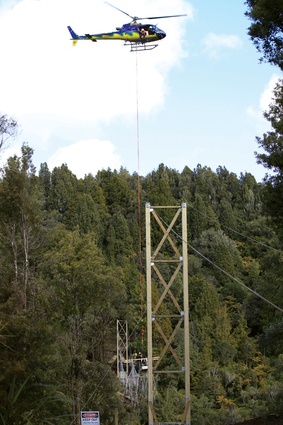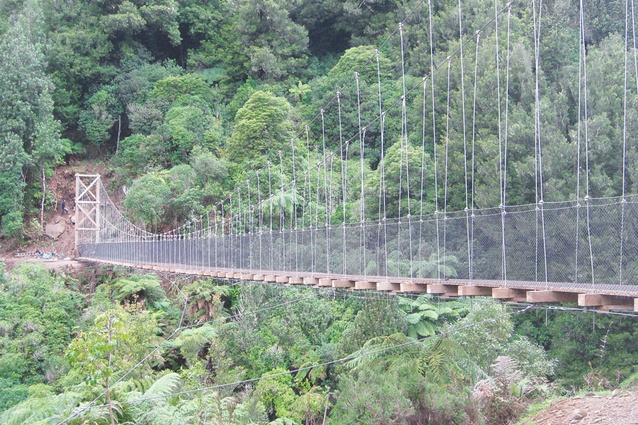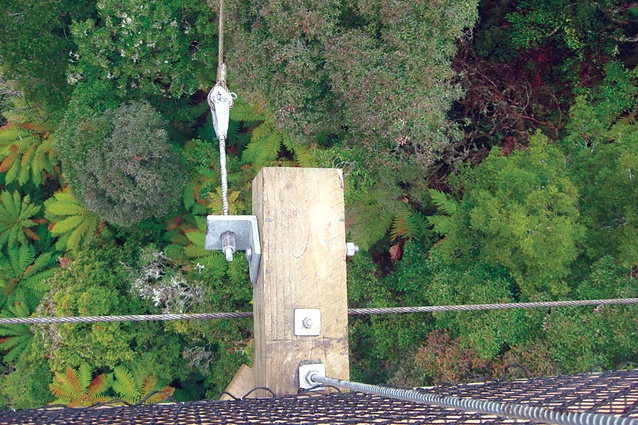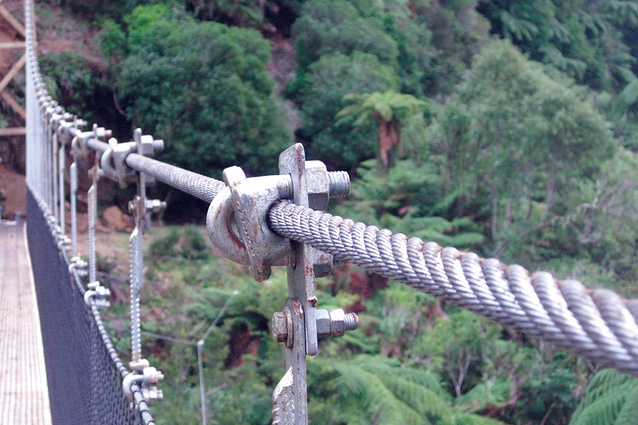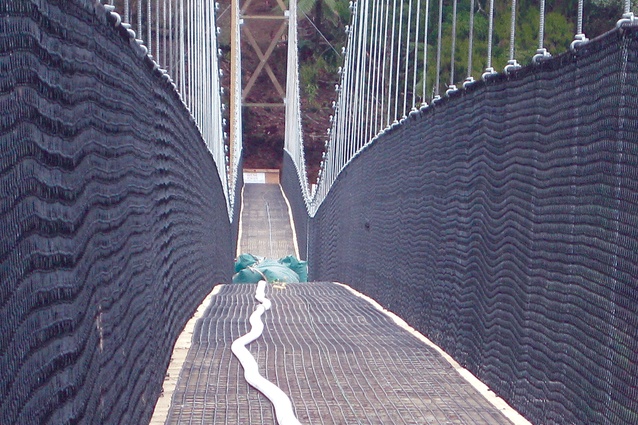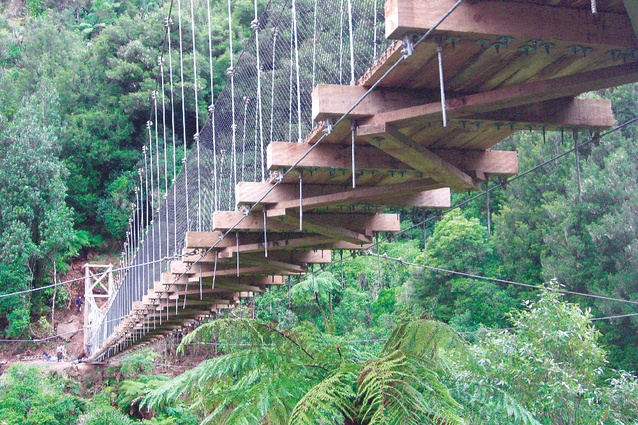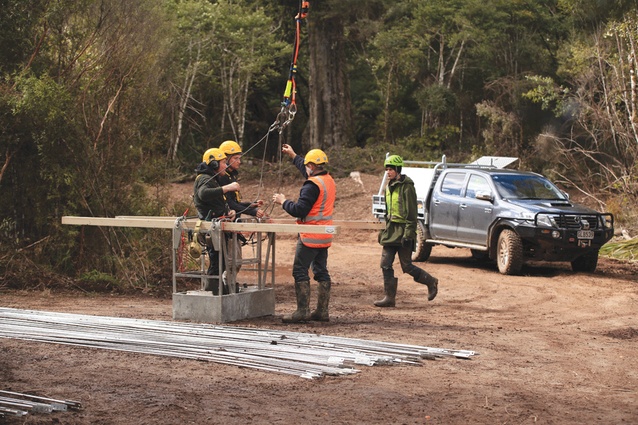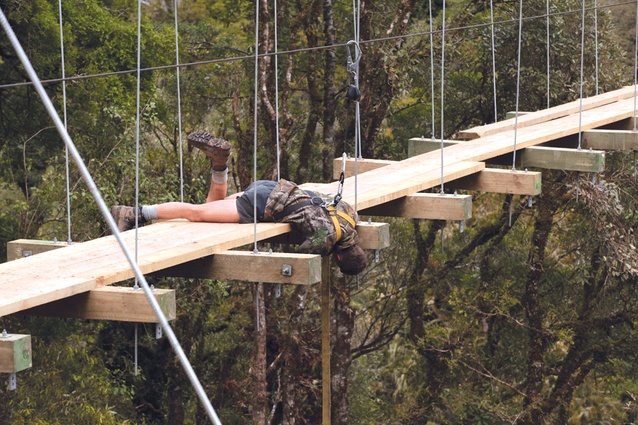Striking suspension
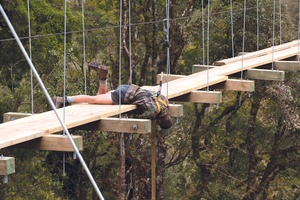
The Timber Trail, an 84km cycleway between Pureora and Ongarue, winds through a strikingly scenic area of the country, passing through magnificent forests and across deep gorges. The route is part of Nga Haerenga – the New Zealand Cycle Trail – and comprises more than 50 bridges, which are set to open in their entirety in February 2013, although the southern part of the trail opened in early December.
The bridges range dramatically in design and structure, but a team from Auckland consultancy Frame Group designed the majority – suspension, glulaminated beam, and timber pole bridges. Managing director Trevor Butler said of the 32 structures designed by Frame Group, eight were suspension bridges.
“The suspension bridges are crossing whole valleys; the longest is 141 metres and it is 53 metres above the river below,” Mr Butler said. “It is the longest suspension bridge to be built in New Zealand since the Arapuni Bridge in 1926.”
The cycleway follows much of the historic Ellis and Burnand bush tramways and old bulldozer and haul roads, a theme Mr Butler said was taken into account with the design of the bridges, which were created to have a “rustic” look. “We were keen to mimic the bush tramway theme so we used timber and timber cross bracing as opposed to steel,” he said.
The largest of the suspension bridges was constructed at remarkable speed, a result, Mr Butler said of the design and amount of prefabrication involved because of the isolated location. “From the time the foundations and anchors were put in, it took 20 days to fully erect it,” he said.
“The wire ropes were ordered at their exact lengths … the hangers were attached to cables and then flown in as a big string by helicopter. “There’s a whole technique to doing construction in the back country … the contractors become quite skilled at managing the logistics involved with it.
“They could drive a ute to it, they could drive a quad bike to it, but it’s two hours from the closest hardware shop.”
Mr Butler said the remote aspect of the bridge location meant it wasn’t possible to get a crane or trucks to the site so everything had to be erected with light weight equipment or flown in by helicopter.
Contractor for the 141-metre bridge, Edifice Contracts, project manager Andrew Hamilton said a combination of the weather, poor ground conditions, and the rugged terrain surrounding the remote location provided the biggest challenges for his team of six who completed the erection of the largest bridge in under a month.
“During the foundation stage we came across a lot of fractures in the ignimbrite rock so there was a lot of extra work needed including drilling and grouting in two extra 14-metre laterals.
“It was a real challenge because of the span – we had to use GPS to get anchor points,” he said.
“Because suspension bridges are relatively low cost structures – the largest cost $380,000 – we didn’t do highly detailed geo-technical investigations. The foundations are simple and fairly conservative … they had to be constructed without heavy machinery, so in this case they are bored concrete pile anchors,” Mr Butler said.
“We drilled down and in a lot of cases drilled into soft rock. The pile anchors are about 4.5 metres deep and most of the bridges are founded on rock … the actual anchor is attached to the rock.”
Mr Butler said suspension bridges were chosen in this instance because they were one of the most cost effective ways to create a long-span bridge to cross a large area without intermediate supports.
Mr Hamilton said the construction process following the completion of the foundations was completed relatively easily. “We pre-fixed the lateral wires, hangers and plates, so we fixed them on the ground and then suspended them.
“We used a man cage from the helicopter for fitting the hangers and that achieved a lot of time savings, and it was safer than other methods we could have employed,” he said.
“Over the past 12 years we have refined the suspension bridge design … we now use Reidbar and special fittings, which are usually used in buildings for cross-bracing. But we use them because they work very well … some of these relatively simple components are extremely effective,” Mr Butler said.
All the suspension bridges on The Timber Trail have restricted loads – ten people at any one time, or approximately 1.2 tonnes. Mr Butler said when the load test was done on the 141-metre bridge, it dropped by about a metre, which was the expected result.
“The load test involved putting a big bladder on the bridge filled with water. “We load tested at way above the design load, so that bladder had 3500 litres of water in it, weighing 3.5 tonnes.”
Remote suspension bridges such as these are making their mark, with interest from overseas developing at pace, Mr Butler said. “Back in the 1970s the New Zealand Forest Service started using swing and suspension bridges for recreational access … so New Zealand has become quite well known for our expertise in this area.”

